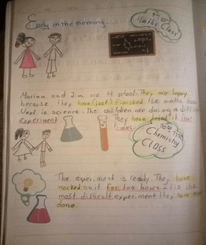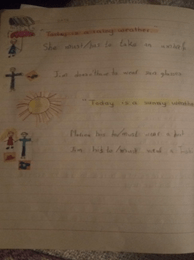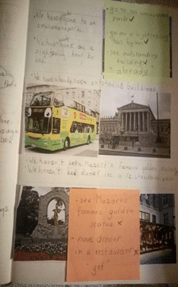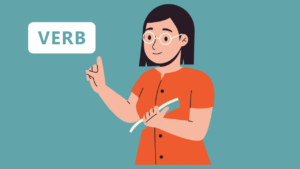By Vasiliki
Have you ever realized that some amazing things have happened completely unintentionally during our teaching practice, so spontaneously but yet so effectively that we can’t help thinking
why haven’t I thought about it before?!
An unexpected study case
The story goes like this:
Vassia, a 13 – year – old intermediate student now, has been my student for about 3 years. I started working with her at home giving her extra private grammar lessons. She was mainly learning English as a foreign language at her private elementary school but she seemed to experience some difficulties with grammar. It was clear to me that she didn’t find anything fascinating in the traditional lesson based on grammar books and although she could say grammar rules by heart, it was still difficult for her to implement these rules in grammar activities and even more so in less structured writing activities!!! Eventually, she was completely discouraged. I tried to use games to make the lessons more appealing to her ,but it didn’t work well; you see, working on a one to one basis I had to be her partner in our games and she didn’t seem to enjoy that…
One day, I asked her to write an example to practice a specific grammatical structure. Instead and to my surprise, she introduced me to Marina and Jim letting me know – in the most formal for a ten year old girl way – that they were going to be the main characters in her stories…
At that point I was completely unaware of what she had in mind, but lesson by lesson I admired her willingness to give life to any grammatical structure mainly describing Marina’s and Jim’s daily life. Vassia had found a way to turn her grammar boredom into an artistic experience!
[Marina and Jim travelling to Austria: practicing present perfect simple “have already done / haven’t done yet”]
[Practicing “wishes”]
The results were awesome!!! Soon she was completely in charge of the lesson and after she had been introduced briefly to a new structure, she was eager to put it in paper through her little stories. Her work was completely effortless, swapping form writing to drawing. Gradually, what had started as an unintentional unstructured activity was integrated into a well – organized lesson plan: the student was given the opportunity to create visual representations applying and practicing the grammar rules without spending time doing boring grammar exercises. Sometimes, these comic stories triggered more structured writing like a letter or a story where my student applied all the principles of the particular genre.
The outcomes were more than just rewarding: grammar had nothing to do with practicing rigid rules and structures, it was FUN!!! Therefore, she was looking forward to the next lesson to apply a new structure by writing a new “episode” of Jim’s and Marina’s life and as her notebook was filled with these stories, she was so proud of it that not only did it give her a feeling of achievement but she was also keen on writing interesting stories with the least possible mistakes. My young student had put her creativity at the service of her language learning procedure fostering her autonomy. She had become a self motivated learner!
Out of the blue, this case put the issue of learners’ autonomy related to creativity and growth mindset at the core of my professional reflection and inquiry. I had to ask myself the following:
How important do you think learner’s autonomy is?
What do you do to promote learner’s autonomy?
The importance of learners’ autonomy and how it is promoted through creativity.
Learners’ autonomy has been established as a key issue in the field of EFL learning for quite a long time (Borg, S., Al – Busaidi, S., 2012) and it is related to more learner centered approaches. According to Nunan (2003), learners who are able to contribute to their own learning could be regarded as autonomous. Such an approach bears a resemblance to more traditional practices integrating elements such as planning, implementation and evaluation are still important elements (ibid). However, education is no longer established on the strict transmission of knowledge from educators to learners (the teacher centered educational models) but now students are in the center of the process making their own decisions (ibid.).
This is not to discredit the role of educators but, on the contrary, to illustrate how and to what extent their role has changed to meet the demands of the contemporary educational circumstances. Teachers are not the elite who hold the knowledge and distribute it accordingly, but mostly they help learners to use this knowledge in the most sufficient and effective way, not only for their own progress but eventually in the best interests of the community.
An equally important issue related to learners’ autonomy is the view of failure as an opportunity to learn. Learners are really independent when they learn through trial and error and, unless educators help them develop a growth mindset,to analyze and objectively evaluate the outcomes of their efforts, they cannot reach real autonomy.
Among other things, 21st century teachers can work as instructional innovators to foster their students’ creativity which is raised as “one of the most exciting concepts that currently inform ELT” (Xerri, D, Vassalo, O., p. 1, 2016). Consequently, creativity can empower students to be active members of the learning process. “Creativity is really important both in life and in teaching and learning a language” (Maley, A., 2015, p. 6). However, creativity is not about “letting you imagination run free […] it also involves refining, testing, and focusing what you’re doing. It’s about original thinking on the part of the individual, and it’s also about judging critically whether the work in process is taking the right shape and is worthwhile, at least for the person producing it” (Robinson, K. 2017), that is creativity can help learners get actively involved into the learning process and discover what they can do with the second language they learn (Rosenberg, M. 2015).
Conclusion
As Marjory Rosenberg indicates that “simply memorising vocabulary or learning grammar rules is not necessarily a sign that learners have internalised language or even dealt with ‘how to learn’. But when we step back and give them the opportunity to access the language they need in order to express what they would like to put into words, a very different type of learning begins to take place.” (Rosenberg, M., p. 127, 2015). By reading through these little Marina and Jim’s stories, you can see the student’s progress. There is no need for an evaluation report, her work speaks for itself. The student started from simple sentences and moved to full paragraphs, and sometimes these stories inspired further writing practice (an email, a story). Her drawings became more meaningful, too, creativity and language acquisition going hand in hand. Equally important, the student was given the opportunity to be in charge of her own learning, experiencing failure though creating and formulating her own material until she was satisfied with the final outcome and really proud of it.
Now, Vassia is a young teenager and she finds it a bit childish to illustrate her grammar lessons with Marina’s and Jim’s adventures. However, she keeps her old notebook in her drawer. I really had to beg her to let me have it for a couple of days to write these lines!!! I am sure that these grammar lessons have offered her something to remember for all her life!
References
- Borg, S., Al – Busaidi, S., (2012) Learners Autonomy: English Language teachers’ Beliefs and Practices. British Council. Accessed online in: https://www.teachingenglish.org.uk/sites/teacheng/files/b459%20ELTRP%20Report%20Busaidi_final.pdf
- Maley, A., (2015) Overview: Creativity – the what, the why and the how in Maley, A., Peachy, N. (eds.) (2015) Creativity in the English Language Classroom. British Council. Accessed online in:
- Nunan, D. (2003), Nine steps to autonomy. Accessed online in: http://www.andrasprak.su.se/polopoly_fs/1.84007.1333707257!/menu/standard/file/2003_11_Nunan_eng.pdf
- Robinson, K. (2017) Creativity Is In Everything, Especially Teaching. Accessed online in: https://ww2.kqed.org/mindshift/2015/04/22/sir-ken-robinson-creativity-is-in-everything-especially-teaching/
- Rosenberg, M., (2015) The learner as a creative resource in Maley, A., Peachy, N. (eds.) (2015) Creativity in the English Language Classroom. British Council. Accessed online in:
- Xerri, D, Vassalo, O. (2016) Creativity in ELT: an introduction in Xerri, D, Vassalo, O. (eds.) (2016) Creativity in English Language Teaching. Elt Council. Accessed online in:













